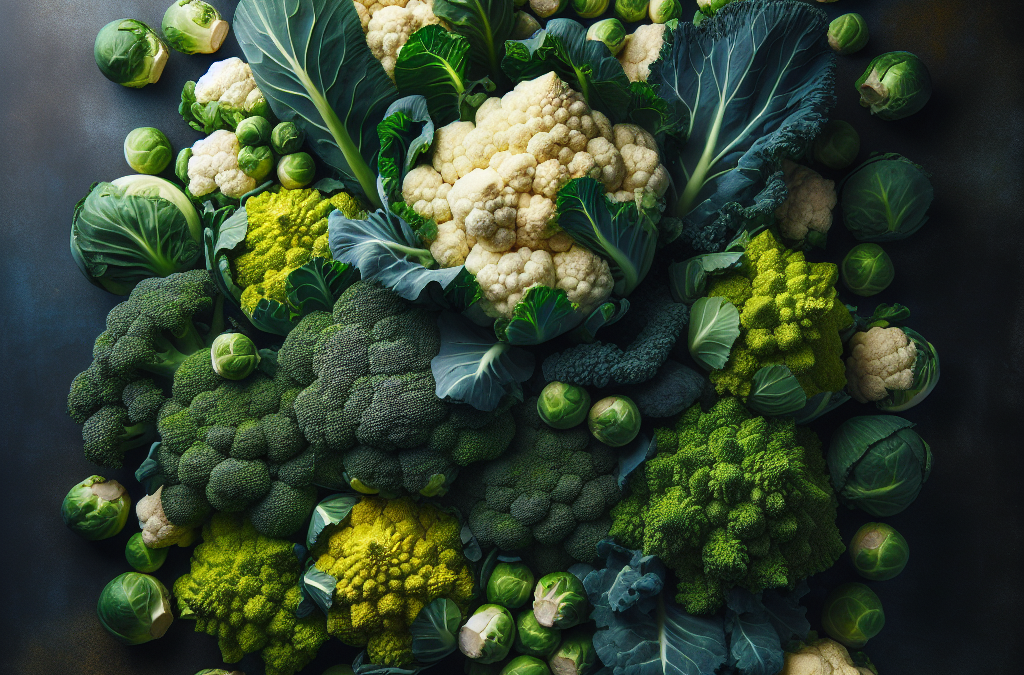Table of Contents
- 1. Prioritize Whole, Unprocessed Foods
- 2. Shop the Perimeter of Grocery Stores
- 3. Embrace Seasonal and Local Produce
- 4. Read Labels Carefully
- 5. Cook at Home More Often
- 6. Incorporate Whole Food Snacks
- 7. Use Whole Grains Instead of Refined
- 8. Prioritize Healthy Fats from Whole Foods
- 9. Plan and Prepare Meals in Advance
- 10. Stay Educated and Keep Learning
1. Prioritize Whole, Unprocessed Foods
Understanding Whole Foods
Whole food eating begins with choosing foods in their natural stateâfresh fruits, vegetables, nuts, seeds, whole grains, and lean proteins. These foods are minimally processed and retain their full nutritional profile, which is essential for maintaining optimal health in 2025.
Unlike processed foods laden with preservatives, artificial flavors, and added sugars, whole foods support better digestion, sustained energy, and overall well-being. When you prioritize whole foods, you’re eating in harmony with nature, which is especially vital as food technology advances in 2025.
For example, opt for fresh berries rather than flavored snack bars or flavored cereals. These choices ensure you’re getting vitamins, minerals, and antioxidants that support your immune system and overall vitality.
Benefits of Whole Food Eating
Research indicates that diets rich in whole foods are associated with a lower risk of chronic diseases such as heart disease, diabetes, and obesity. In 2025, more people are recognizing the importance of dietary habits that emphasize nutrient-dense, whole foods.
Additionally, whole food eating can improve mental clarity and mood. By fueling your body with unprocessed foods, you provide your brain and body with the nutrients necessary for peak performance every day.
Action tip: Start incorporating more whole foods by replacing processed snacks with fresh fruit or a handful of nuts to gradually shift your eating habits toward natural, unprocessed options.
2. Shop the Perimeter of Grocery Stores
Why the Perimeter Matters
Most grocery stores are designed with fresh, whole foods located along the perimeter. By shopping primarily in these areas, you naturally focus on produce, dairy, meats, and baked goodsâmostly unprocessed and nutrient-rich options.
This grocery store layout is intentional, making it easier for you to choose whole food eating habits without the temptation of processed aisles filled with snacks, sugary cereals, or convenience foods.
In 2025, smart shopping involves being mindful of this layout to maximize your intake of fresh, wholesome foods while avoiding the lure of highly processed items.
Tips for Efficient Perimeter Shopping
- Create a shopping list focused on fresh produce, meats, dairy, and bulk grains.
- Avoid the middle aisles unless you need pantry staples like oats or nuts.
- Look for organic and local products when possible to enhance the nutritional value and support sustainable farming.
For further tips on shopping efficiently, check out our seasonal produce guide.
3. Embrace Seasonal and Local Produce
The Power of Eating Seasonally
Eating seasonal foods ensures you’re consuming produce at its peak freshness and nutrient density. In 2025, the focus on local and seasonal foods is stronger than ever, supported by sustainable farming practices and community-supported agriculture programs.
Seasonal fruits and vegetables are more flavorful, affordable, and environmentally friendly, contributing to your whole food eating goals and reducing your carbon footprint.
For example, in spring, strawberries and asparagus are abundant and rich in nutrients, while winter offers root vegetables like carrots and parsnips that sustain you during colder months.
Supporting Local Farmers
Buying directly from local farmers or markets not only ensures fresher, more nutrient-dense foods but also supports your communityâs economy. Many farms now offer organic options, aligning with the principles of whole food eating.
Farmers markets are a great resource for discovering new seasonal produce and building a connection with the food you consume. Plus, locally harvested foods typically require less transportation, which reduces environmental impact.
Action tip: Join a local CSA (Community Supported Agriculture) to receive regular deliveries of seasonal, local produce tailored for whole food eating in 2025.
4. Read Labels Carefully
Decoding Food Labels
Understanding whatâs in your food is essential for whole food eating. Carefully reading labels helps you avoid hidden additives, preservatives, and artificial ingredients that can undermine your health.
In 2025, label transparency has improved, but itâs still important to develop a discerning eye. Look for recognizable ingredients and avoid items with long lists of unpronounceable chemicals.
Pro tip: Choose products with minimal ingredientsâideally one or twoâsuch as “almonds” or “whole wheat flour,” to ensure youâre truly eating whole foods.
Understanding Certifications and Terms
Seek certifications like Organic, Non-GMO, and Fair Trade to ensure the food meets high standards of quality and sustainability. These labels often align with a commitment to whole food eating by prioritizing unprocessed, high-quality ingredients.
Additionally, familiarizing yourself with terms like “minimally processed” or “whole grain” can guide your choices towards healthier options.
For more insights on reading labels effectively, visit reputable sources such as the USDA Food Safety and Inspection Service.
5. Cook at Home More Often
The Benefits of Homemade Meals
Cooking at home gives you full control over what goes into your food, making it easier to adhere to whole food eating principles. Homemade meals are generally lower in sugar, sodium, and preservatives compared to restaurant or processed foods.
In 2025, with the rise of meal-prep technology and versatile kitchen tools, preparing wholesome meals has become more accessible and efficient than ever. Batch cooking and meal prepping can save time and reduce stress during busy weekdays.
For example, preparing a big batch of vegetable stir-fry or hearty soups allows you to enjoy nutrient-dense, satisfying food throughout the week.
Practical Tips for Consistent Cooking
- Plan your weekly menus around seasonal, whole ingredients.
- Invest in quality kitchen tools like a good chefâs knife and food processor.
- Keep staples like whole grains, legumes, and fresh produce on hand for quick, healthy meals.
Discover our recommended meal prep recipes in the meal planning section.
6. Incorporate Whole Food Snacks
Healthy Snack Ideas
Snacking can be part of a whole food eating plan if you choose nutrient-dense options. Think beyond chips and candyâopt for nuts, seeds, fresh fruit, or veggie sticks with hummus.
These snacks provide sustained energy and vital nutrients, supporting your health goals for 2025. They can also help prevent overeating during main meals.
For example, a handful of almonds combined with dried apricots makes a balanced, satisfying snack thatâs easy to prepare and portable.
Huge Discount on the Best Certified Organic Whole Food Supplement!
Meal and Snack Planning
Planning snacks in advance ensures you always have healthy options ready, reducing temptation and promoting consistency in your whole food eating habits. Incorporate a variety of textures and flavors to keep things interesting.
Tip: Use glass containers or reusable bags to store your snacks, reducing waste and promoting eco-friendly habits aligned with sustainable whole food eating in 2025.
Learn more about healthy snacking strategies in our meal prep and planning tips.
7. Use Whole Grains Instead of Refined
Benefits of Whole Grains
Switching to whole grains like brown rice, quinoa, oats, and whole wheat bread significantly boosts your intake of fiber, B vitamins, and minerals essential for a balanced diet in 2025.
Refined grains lose many nutrients during processing, reducing their health benefits. Whole grains maintain the fiber-rich bran and germ, supporting digestion and helping regulate blood sugar levels.
For example, substitute white rice with millet or brown rice in your meals to enhance nutrient density and support your whole food eating journey.
Tips for Incorporation
- Start gradually by swapping refined products for their whole-grain alternatives.
- Experiment with different grains like barley, farro, or buckwheat for variety.
- Look for label claims like “100% whole grain” to ensure authenticity.
For a comprehensive list of whole grains and recipes, see our whole grain guide.
8. Prioritize Healthy Fats from Whole Foods
Sources of Healthy Fats
Instead of processed snacks with trans fats or cheap oils, focus on sources like avocados, nuts, seeds, and fatty fish. These fats are essential for brain health, hormone production, and overall wellbeing.
In 2025, awareness about the importance of healthy fats continues to grow, and many food companies are reformulating products to include better fat sources, aligning with whole food eating principles.
For example, add sliced avocado to salads or toast, include chia seeds in smoothies, or enjoy salmon for omega-3 fatty acids.
Balancing Fat Intake
While healthy fats are beneficial, moderation is key. Incorporate a variety of fat sources within your daily diet to ensure nutritional balance without excess calorie intake.
Tip: Use olive oil for cooking and dressings, and be cautious of oils high in omega-6 fats which can promote inflammation if consumed excessively.
Learn more about balancing macronutrients and healthy fats in our meal planning section.
9. Plan and Prepare Meals in Advance
The Power of Meal Planning
Meal planning is a cornerstone of whole food eating, especially in a busy 2025 lifestyle. Preparing meals ahead reduces reliance on processed foods and last-minute unhealthy choices.
Use weekly menus, grocery lists, and batch cooking strategies to streamline your efforts. This ensures you consistently align your eating habits with whole food principles.
For instance, prepping vegetable-rich salads or grain bowls on weekends makes healthy eating effortless during hectic weekdays.
Tools and Tips for Successful Meal Prep
- Dedicate a specific time weekly for shopping and preparation.
- Use containers that keep food fresh and are environmentally friendly.
- Experiment with versatile recipes that can be customized with seasonal ingredients.
Explore our top meal prep recipes and planning tools in the learning and resources section.
10. Stay Educated and Keep Learning
Keeping Up with Trends and Research
The landscape of nutrition and whole food eating is always evolving. In 2025, remaining informed through reputable sources helps you refine your approach and incorporate new insights.
Attend workshops, read scientific studies, and follow trusted nutrition experts to stay motivated and knowledgeable about how whole food habits support your health goals.
For example, emerging research on the gut microbiome highlights how diverse, whole-food-based diets can improve digestion and immunity.
Community and Support
Joining online forums or local groups dedicated to whole food eating can provide encouragement, recipes, and accountability. Sharing your journey with others helps sustain motivation and inspiration.
In summary, continuous learning is key to maintaining a successful and enjoyable whole food eating lifestyle in 2025.
Conclusion
Embracing whole food eating in 2025 is more accessible and essential than ever. By prioritizing unprocessed, nutrient-rich foods and adopting these ten effective strategies, you set yourself up for improved health, energy, and well-being. Remember, small consistent changes can lead to lasting habitsâmaking your journey toward whole food eating rewarding and sustainable.
Start today, stay informed, and enjoy the numerous benefits that come from a commitment to eating in harmony with nature through whole food eating in 2025 and beyond.
Frequently Asked Questions
1. What is whole food eating?
Whole food eating involves consuming foods in their natural state or minimally processed, focusing on fruits, vegetables, nuts, seeds, whole grains, and lean proteins to maximize nutrition and health benefits.
2. Why is whole food eating important in 2025?
In 2025, whole food eating remains vital due to increasing food technology, environmental concerns, and a growing understanding of nutritionâs role in preventing chronic diseases and supporting mental health.
3. How can I start incorporating whole food eating into my daily routine?
Begin by shopping the perimeter of stores, cooking more meals at home, and choosing whole grains and unprocessed snacks. Gradually replace processed items with whole foods to create sustainable habits.
4. Are there any challenges to whole food eating, and how do I overcome them?
Challenges include time constraints, cost, and availability. Planning meals, buying in bulk, and growing your own produce or joining community-supported farms can help overcome these obstacles.
5. What are the best resources for learning about whole food eating?
Look for reputable blogs, nutrition experts, scientific journals, and community groups focused on sustainable, whole food diets to stay informed and motivated.




